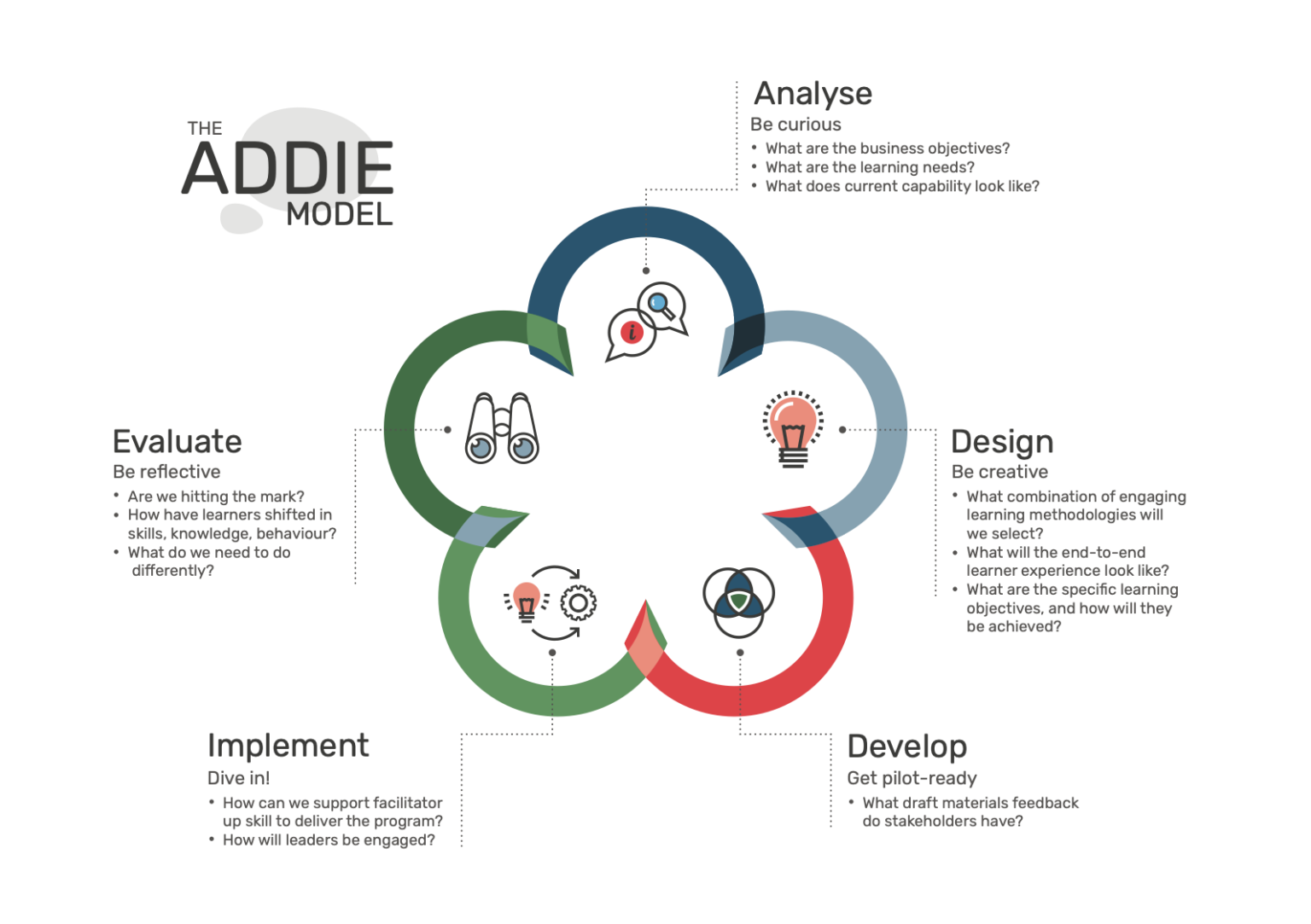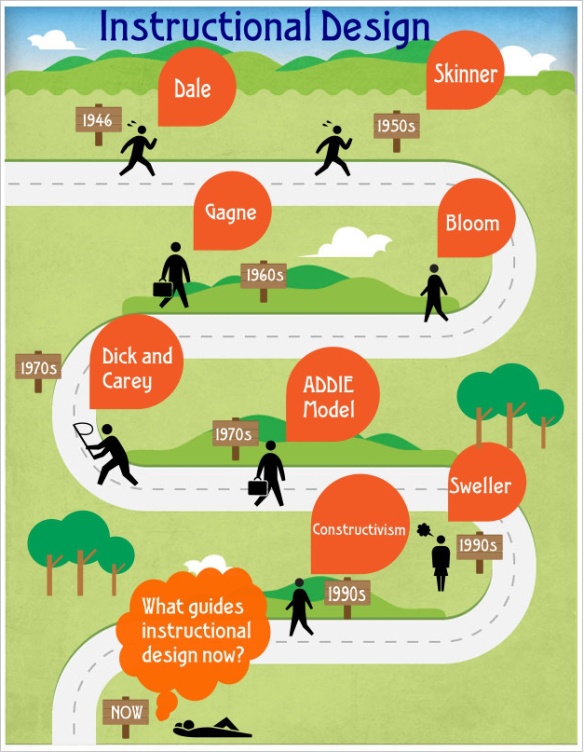Table Of Content

Job boards, LinkedIn, university career pages, and specialized e-learning websites are excellent platforms to begin the search. Screencasting is the process of recording all your activities and images on your computer or tablet screen. An audio recording, sound effects, and music tracks can be added to your video file to make it more engaging and compelling. This instructional design example is commonly used to demonstrate a procedure, show how a software program works, or explain a concept using PowerPoint slides. Action mapping by Cathy Moore takes a visual approach to instructional design and is popularly used in the context of business.
What Instructional Designers can learn from Dynamic Training
Say goodbye to endless walls of text and embrace course layout best practices. You can use visual chunking and subheadings to deliver smaller, more bite-sized chunks of knowledge straight to the learner. Digestibility permeates all aspects of course creation, whether you’re considering breaking up a long video or thinking about using bullet points rather than a paragraph. Besides the immersive multimedia techniques discussed above, consider using learning groups and breakout rooms on video calls. If you are fortunate enough to be working in a somewhat synchronous learning environment, small steps like these can go a long way toward creating peer-to-peer connections. If students wanted to simply read block after block of text, they’d choose a book over your course.
Instructional Design Models For Creating A Winning Online Course
Included are figures, case students, examples, tables, and videos in a way that enhance the text. However, reflective exercises are sometimes included in chapters, which would be even more helpful and valuable if they were included in every single chapter. The terms 'curriculum design' and 'instructional design' are often used interchangeably. However, these two concepts, while interrelated, are distinct in their approach and scope. Instead, SAM addresses such roadblocks as managing quality, deadlines, budgets, and even subject matter experts. SAM is an Agile eLearning development process built specifically for the iterative process involved in the creation of ROI-driven learning.
Support

In 2017, Weitzman was named to the Forbes 30 under 30 list for his work making the internet more accessible to people with learning disabilities. Cliff Weitzman has been featured in EdSurge, Inc., PC Mag, Entrepreneur, Mashable, among other leading outlets. Should you wish to apply the spaced repetition technique to your training initiative, EdApp has the solution for you. Its add-on feature, Brain Boost, is engineered based on the science of spaced repetition.
Here, you’ll organize your learning content into a methodical, engaging learning flow that will help learners understand and engage with the learning material. When designing an eLearning course outline or instructional design storyboard, it’s helpful to detail how each training block aligns with your learning objectives. Creativity and experience got me so far, but then I realized that a deeper understanding of how people learn would help me improve the courses and workshops I designed. Instructional design theories and learning frameworks provide a solid foundation that you can build upon with your signature style. There has never been a better time to enter the instructional design career field.
Overcoming challenges in instructional design for immersive L&D - Chief Learning Officer
Overcoming challenges in instructional design for immersive L&D.
Posted: Mon, 10 Apr 2023 07:00:00 GMT [source]
Next steps
In my own practice, I learned from mentors and teachers I admired and through trial and error long before I came across learning theory. The ADDIE model, comprising Analysis, Design, Development, Implementation, and Evaluation phases, is the most popular instructional design model. The logic behind this feature is that it’ll automatically send your learners a series of quizzes in spaced intervals.
You can envision the Kemp design model as a solar system where everything revolves around the learners. While the actual steps of the instructional design process are akin to ADDIE, if a little bit more detailed, the change is in the perspective taken. Below are 3 instructional design models you can learn from for design that specifically supports motivation.
Only then will you be able to develop a course packed with materials and activities that will delight your students and help them get the most out of your classes. Delivering instructional materials that are engaging, tech-integrated, and accessible can be challenging in an evolving academic landscape. With this goal in mind, the following key principles ensure that institutions and schools provide quality learning experiences. The process doesn't just involve planning what information to present and how to deliver it, it's also about creating a tailored learning environment that fosters interaction and practical application.
Engage the Learner’s Senses
CHLOE 7: The Present and Future of Instructional Design Capacity - Inside Higher Ed
CHLOE 7: The Present and Future of Instructional Design Capacity.
Posted: Tue, 09 Aug 2022 07:00:00 GMT [source]
Curriculum design places an emphasis on the broader level of course design, including overall goals and content. Meanwhile, instructional design hones in on specifics, including the strategies needed to help students succeed. But instructional designers and curriculum designers also share responsibility for much of the course design process, including selecting course materials, concrete learning objectives and evaluation methods.
The models follow various academic theories that map to how people learn and the cognitive processes behind the learning experience. These models ensure the instruction is as effective as possible for ensuring that learners acquire knowledge or skills. Instructional design (ID) is the systematic process of creating educational and training programs that lead to effective and efficient learning experiences. It involves the strategic creation and organization of content, assessments, interactions, and feedback mechanisms to foster effective and engaging learning experiences within technology. The main goal of instructional design is to make learning more effective, efficient, and engaging for learners.
Lastly, Evaluation is the process of measuring the effectiveness of the instructional design. It's about giving feedback, assessing learners' progress, and making necessary adjustments to the course design. In essence, instructional design is the backbone of effective education, the catalyst that can transform a mundane lesson into an engaging, memorable learning journey. Firstly, there’s technology that delivers courses to all corners of the globe and makes learning more engaging. Augmented reality and wireless technology are just two examples of how education can spread far and wide thanks to the digital world. After completing the first step, you’re now ready to focus on the learning objectives for the program at hand.
Stating course objectives can help learners engage with each step of the learning flow, understanding what the overall goal is and how each step can help them reach that goal. Applying this instruction design example to your learning product isn’t exactly rocket science, and it can be learned through training and exercises. Browse our list of free storytelling training courses to find the best training that will help expand your knowledge of storytelling and learn how to put it into practice. It takes pride in its drag-and-drop creator tool, which houses 80+ interactive templates that have been structured to follow a microlearning approach. It’s so easy and intuitive that you can design your microlearning content in the morning and distribute it right away in the afternoon. Built-in tools to organize content and create interactive and dynamic presentations, graphic organizers, and more for learning activities.
It's underpinned by the fundamental understanding of how people learn, and it employs a variety of instructional models to ensure educational content aligns with the learner's needs and the defined educational goals. Instructional design is a multifaceted approach to lesson planning that reshapes the teaching landscape, evolving it into an engaging, interactive experience rather than a one-way transmission of knowledge. And our principles, strategies, and tips will set you up for success on your instructional design journey. As such, instructional designers and learning leaders would more likely have to incorporate elements of other models in order to effectively build and deliver content that measures knowledge and skill acquisition.
Go to your favourite job search engine and explore job descriptions for instructional designers. As we explore the different phases of the ADDIE instructional design model, we will provide examples of what an instructional design document may include for each of the phases. Scenarios are often incorporated into online courses to help learners understand concepts better. Scenarios are any relevant examples that can help a student relate to the material better. They’re like simulations, in which learners are asked to imagine they are in a situation to help them problem-solve using skills covered in the course itself. The 9 Events of Instruction is an instructional design model created by American educational psychologist Robert Gagné.
Relevance is obtained by anchoring new skills into existing knowledge, and understanding how they will be applied. What actions will learners take that would have been different before the course? Learning journals and reflection questions are a great way of applying this step in learning. Explore creating enhanced course content, providing effective digital learning strategies, and teaching with the best tools.
The use of foundational learning frameworks means an increased emphasis on course materials that work with cognition rather than against it. It’s this addition of learning theories into the course design process that has the potential to forever change the educational landscape. In adult learning, it’s been shown that people learn better when they know why they’re doing a particular activity and what the goals or desired outcomes of a training program are.
No comments:
Post a Comment